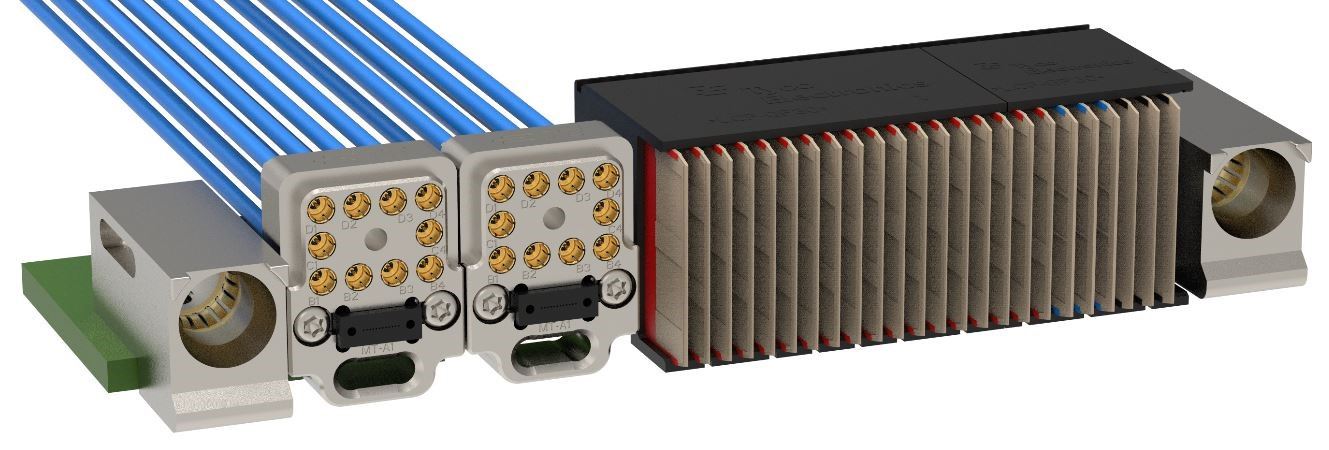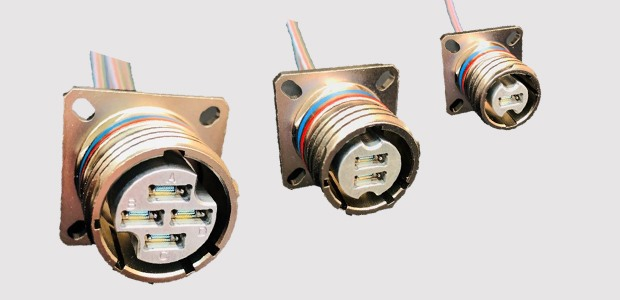By Michael Walmsley, TE Connectivity (TE)
“Next-gen” products and standards for OpenVPX architecture are rapidly evolving to help military embedded system designers keep pace with pressing challenges. New VITA standards feature product innovations that offer significant benefits—namely, supporting faster processor and signal speeds, shrinking size and weight. These standardized solutions reduce the need for time-consuming and costly customization.
VITA standards have been leveraged in another influential standards organization—the Sensor Open Systems Architecture (SOSA) Consortium. Comprised of U.S. military branch, government, and related industry representatives, the SOSA Consortium is developing interoperability standards for next-gen sensor systems. SOSA-aligned architectures are being developed for signal intelligence (SIGINT), electronic warfare (EW), radar, and communications applications. SOSA is adopting OpenVPX architecture within the box and collaborating with VITA to leverage existing standards, while also driving new VITA standards.
OpenVPX interconnects
A range of VITA standards define the interconnects in OpenVPX architecture, from the primary digital interface to RF and optical links, mezzanine cards, and power supplies. Many of these standards are seeing new extensions (so-called “dot” specifications) or revisions to address higher speeds and density. As packaging requirements shrink, the need for more bandwidth and higher density drives an evolution for interconnect solutions throughout the system—at the plug-in module to backplane interface, at the mezzanine card interfaces, within the plug-in module, and at the panel for external cabling.
VITA standards developments for OpenVPX
* VITA 46.30 is being published to define a higher data rate VPX connector based on TE Connectivity’s (TE’s) MULTIGIG RT 3 connector. This connector supports 25+ Gb/s baud rates to enable PCIe Gen 4 serial communications and 100GBASE-KR4 Ethernet while maintaining mating compatibility with legacy VITA 46 connectors.
* VITA 67.3 (radio frequency [RF] modules) is being revised to add options for higher density coaxial interfaces, namely SMPS and NanoRF. These designs support 2-3 times the density of the legacy SMPM- based designs that started with VITA 67.1 and 67.2. (Figure 1)

Figure 1: Higher density optics and RF connector examples
SMPS is a high-density RF interface option, using radial float of the individual contacts within the module to provide the alignment in mating, similar to SMPM contacts but on a smaller scale.
NanoRF is a rugged, high-frequency nano-miniature coax system that utilizes a floating insert within the backplane module frame. This approach pre-aligns the RF contacts before they engage to assure reliable engagement with minimal wear.
VITA 66.5 is in process to define blind mate fiber optic interconnects for VITA 46 backplanes and plug-in modules, and brings the capability for mounting transceivers directly on the edge of the plug-in board (within a VITA 66 module frame) to save board space. A 3-MT (mechanical-transfer) half-size module is being incorporated into this standard for unprecedented optical density. In addition, the floating insert design used for alignment in both NanoRF and VITA 66 optical modules allows for integrating both RF and optics into a common connector module for additional density – this technology is being enabled by the upcoming VITA 66.5 standard.
SOSA has reviewed common use cases and is standardizing on several RF, optical, and RF/optical combination connector module configurations. These connector modules are being adopted in specific slot profiles and will be documented in VITA 65.0 and 65.1, which define the slot profiles and associated interconnect.
Developments in external interconnects and cabling
For external connections between boxes, SOSA is adopting military-standard solutions, such as MIL-DTL-38999 rugged circular connectors. But the need for higher density copper and optics at the panel has driven SOSA to also utilize VITA standard solutions. VITA 76 circular copper interconnect will be used in SOSA systems for high-density, high-speed copper transmission. And the SOSA requirements for higher density optics led to the start of the VITA 87 standard, which will define a rugged circular connector with high-density MT interfaces. The designs in the VITA 87 draft standard include M38999 size 11, 13, and 15 shells with 1, 2, and 4 MT ferrules respectively. These VITA standard external I/O solutions enable significant bandwidth going outside the box while minimizing panel space. (Figure 2)

Figure 2: D38999 Series III Style circular connectors with up to four MT ferrules accommodating up to 96 optical channels
It’s true—the pace of change is challenging for designers of military embedded systems. But evolving VITA standards have enabled the introduction of numerous “next-gen” products and supports an open architecture for sensor systems through the SOSA Consortium. And the SOSA efforts have driven new VITA standards that will produce valuable technologies not just for SOSA aligned systems, but for the embedded computing industry as a whole. As a result, it’s getting easier to keep pace with demanding requirements without resorting to custom solutions that put projects on a costlier, slower track.
Learn more about TE’s interconnect solutions for rugged, high-speed environments here.
Michael Walmsley is Global Product Manager for TE Connectivity—Aerospace, Defense & Marine.

